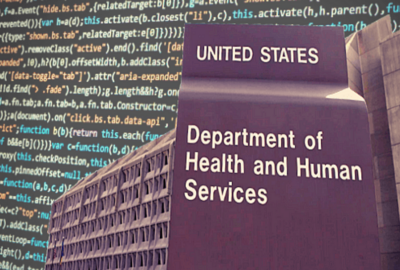Advanced mobile devices pave USPS’ way toward Internet of things
Randy Miskanic, the Postal Service\'s acting chief information officer, said over the next six months 225,000 letter carriers and other employees will be using ...
Mobility is at the center of nearly everything the U.S. Postal Service does as part of its mission. That’s why the roll out of advanced mobile devices is so critical to the organization.
Randy Miskanic, the Postal Service’s acting chief information officer, said the new devices will let carriers and other employees operate in a real-time environment, where decision- making data is pushed out, and mission-data is collected and provided back to management. 
USPS hired Honeywell under a $250 million contract to provide next-generation Mobile Delivery Devices. The device will replace an 8-year-old scanning tool and the carrier’s cell phone.
Miskanic said mobile units let USPS geo-tech point along the routes and let managers and carriers create routes dynamically, which has been a challenge in the past.
“It’s a bit larger and a lot more rigorous device that has to stand up to the elements and the ability to be used six or seven days a week over an eight-hour period,” he said. “It has multiple features. It allows for scanning and tracking information. It also has an operating system that allows us to create customized applications, anywhere from carrier safety and notifications, route deviations or many others options.”
Miskanic said the devices run on multiple carrier cellular networks. USPS tested the mobile devices by putting them through rigorous testing to ensure connectivity and usability.
“It allows us a lot of opportunities to consider what is next for the future as we look to vehicles and the Internet of Things. What else could we potentially have that could be tethered to a vehicle to increase reach, range and processing capability,” he said. “The team has spent time on to ensure we have the back-end infrastructure set up to absorb essentially a large amount of data. Essentially, we have the ability to capture over 1 billion scans a day.”
The mobile devices are but one of a growing number of real and potential opportunities for the Postal Service to improve its digital services.
The Internet of things is a huge area USPS is exploring, whether it’s with vehicles or packages or digital identity management services.
Miskanic said the technology can help capture better and more timely information throughout the delivery chain, especially without human intervention.
“One of the things that really excites me is the opportunity in the future to be working with suppliers on our new delivery vehicle to replace our long-life vehicles,” he said. “If you think about the potential opportunities there that you have, it’s quite exciting for the Postal Service to think about how we can contribute to testing new technologies in the 180,000 vehicles we have across our infrastructure. That’s something over the next several years we will be prototyping to understand what’s the best fit from all the different components, whether it’s the size of the vehicle or the drive train or what the vehicle is equipped with and considering the discussion we’ve had on the IoT, the possibilities for ‘What if?'”
A lot of these mobile and Internet of things efforts are dependent on the Postal Service’s move to cloud computing.
Miskanic said USPS is taking advantage of mainly hybrid clouds for an assortment of services.
He said the Postal Service has some email in the cloud, and is using software- platform- and infrastructure-as-a-service clouds.
Miskanic said USPS has put its procurement system in a SaaS environment and its customer relationship management application in a PaaS cloud.
“As we look to where we can expand, there are great opportunities for us in all of SaaS, PaaS and IaaS. That’s going to be a big, important component for us as we get more data rich and more petabytes of data that we are collecting, it’s going to be critical for us to have scalability, flexibility and availability that the cloud brings us,” Miskanic said.
USPS is following the Federal Risk Authorization and Management Program (FedRAMP) cybersecurity standards for cloud services.
Miskanic said the common baseline is helpful for USPS as well as its vendors, because it’s what everyone is familiar with in terms of security requirements.
RELATED STORIES:
Jim Cochrane, chief information officer, U.S. Postal Service
USPS augments computer network to handle ever expanding services
DoD releases more details on revised furlough timeline
Copyright © 2024 Federal News Network. All rights reserved. This website is not intended for users located within the European Economic Area.
Jason Miller is executive editor of Federal News Network and directs news coverage on the people, policy and programs of the federal government.
Follow @jmillerWFED







